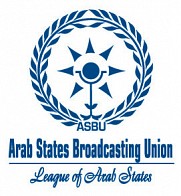Arab region has 1294 satellite TV channels
Sunday, March 15th, 2015
1300 satellite TV channels shower the Arab region
The “Annual Report on Arab satellite broadcasting” is a report issued by the High Committee for Coordination among Arab Satellite Channels (HCCASC), and the Arab States Broadcasting Union (ASBU). The 2014 Report provides updated statistical data on the satellite broadcasting industry in the Arab region, classifies channel categories according to their programming, language of broadcasting, geographic coverage, specialization and public, group or private ownership.
The report also provides a critical reading of new trends and developments of the sector and attempts to understand the phenomenon of satellite channels proliferation and its implications.
In the early nineties of the last century, the number of Arab satellite channels (both public and private) was limited to no more than twenty or thirty channels The current boom has been brought about mostly thanks to the private sector.
Various factors have helped the proliferation of channels, such as the growing role of the private sector, technology developments and digital satellite broadcasting that offered unlimited opportunities, low cost access and wide prospects for development.
The number of Arab corporations broadcasting or re- broadcasting satellite channels stands at 758, including 29 publicly owned ones and 729 owned by the private sector. They all broadcast or re- broadcast 1294 television channels (165 public and 1129 private channels) in multiple languages and a variety of specialties. The rise recorded in the number of public channels is mostly attributed to the return of Libyan television channels to broadcast after having disappeared with the revolution, as well as to the creation of more public specialized channels, especially sports ones.
As for the fields of specialization, we find that sports leads the number of specialized channels with 170 broadcasters, drama (series and movies) channels come second (152), followed by music and variety shows (124), religious channels (95), and news (68).
In addition to the growth in numbers of the private sector, the Report also notices an expansion in the geographical coverage of Arab satellite broadcasting, bringing the signal to all points of the globe, including Australia, New Zealand and the Americas.
The Arabic language and dialects used in the broadcast take the lead as expected, while English is in the forefront of foreign language broadcasts, followed by the French language in addition to Farsi, Hebrew, Hindi, Spanish and Turkish. Amazeegh, Urdu, Hassani, and Berber are also used to reach minority target audiences.
In addition, the Arab region can monitor and watch international channels targeting its population and mostly using the Arabic language and Arab satellites. They include: BBC Arabic, France 24, Germany’s Dutchwelle, the Arabic-speaking channel RAI, Russia Today , as well as Turkish, Korean, Chadian and other channels.
Latest News
- Barb to start reporting TV-set viewing of YouTube channels
- SAT FILM selects multi-DRM from CryptoGuard
- Qvest and ARABSAT to launch OTT streaming platform
- ArabyAds & LG Ad Solutions partner with TVekstra in Turkey
- Freeview NZ satellite TV service to move to Koreasat 6
- Comscore expands YouTube CTV measurement internationally
